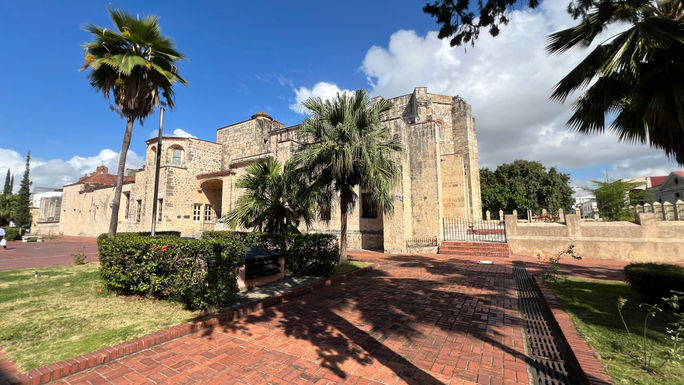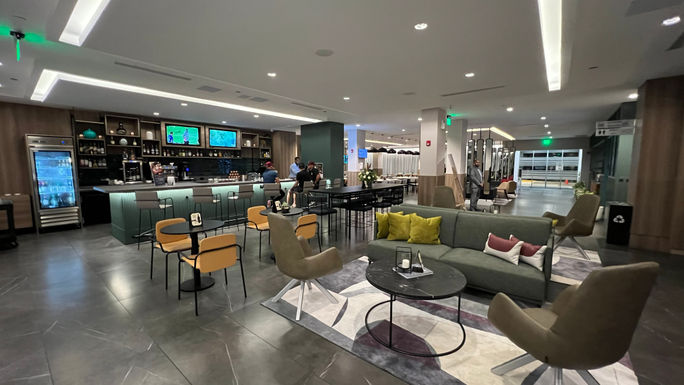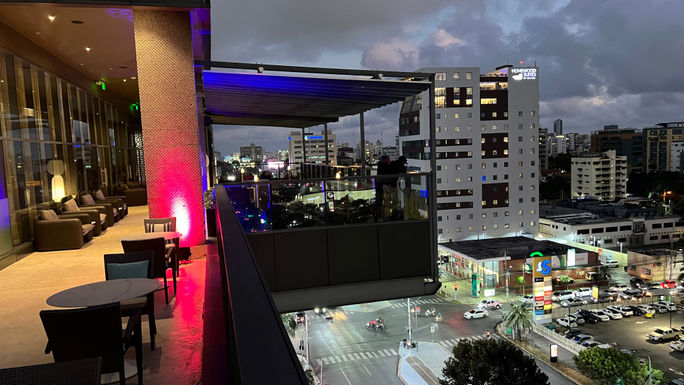The capital city of the Dominican Republic is the largest in the Caribbean, and offers plenty of interesting sights, as well as culture that may not be found as easily in some of the country’s resort enclaves.
Here are five things that stuck out to me after spending a long weekend here.
History
Santo Domingo was the first city built by Europeans in all of the Americas. Thus, you’ll find many firsts here: the first street, the first cathedral, the first monastery, the first commercial district, and so forth. Santo Domingo was the center of the New World for many years—for a time, every ship sailing anywhere in the region had to first come to Santo Domingo to get permission to sail on to its final destination.
This was where Columbus sailed (and “discovered”) first and you’ll find several statues, monuments, and sites dedicated to him, as well as his son, Diego, who played a role here, too, as Viceroy of the Indes. While Columbus’ role in history (and the atrocities visited among New World peoples) is still hotly debated, Dominicans I spoke with seemed to take a measured approach—that this sad history nonetheless influenced this island in a multitude of ways.

Exterior view of the Cathedral of Santo Domingo in the Dominican Republic. (Photo Credit: Photo by Paul J. Heney)
Cuisine
For a country with such warm weather, I was a little surprised to find out how many stews and soups are popular. At breakfast, a traditional dish is mangú, comprised of mashed green plantains, fried salami, and fried cheese. And I heard much ado about morir sonado, a drink of ice, milk, and orange juice. It sounded so bizarre that I had to try it—and I was pleasantly surprised at the concoction, which reminded me of an orange Creamsicle.
Sancocho, a stew with meat, root vegetables, and beans, is served with rice and avocado—and was my favorite discovery of the trip. It is considered one of the national dishes. I also really enjoyed the coconut seafood soup, another common dish here. It can include scallops, clams, and even lobster. And Dominicans have their own version of mofongo, the popular Puerto Rican meal, which was tasty, too. And it goes without saying that fresh fish is everywhere here, and you can’t go wrong choosing anything from the sea while in town.
Lodging
I wasn’t sure what to expect from Santo Domingo, but after visiting three properties under the Marriott umbrella, I came away very impressed by the diversity of lodging as well as the quality.

Courtyard Santo Domingo's lobby area. (Photo Credit: Photo by Paul J. Heney)
The Courtyard Santo Domingo is one of the nicer Courtyards I’ve experienced, with high-end finishes from the public areas all the way down to the guestroom bathrooms. While much of the occupancy here comes from business travelers, the hotel boasts a lovely outdoor terrace where you might find a live band or a karaoke setup on any given evening. And the location is nearby to many local museums, so it can be a smart choice even for leisure travelers.
Downtown, the JW Marriott Santo Domingo is a luxury property attached to a high-end mall but has an intimate feel. Check out its amazing Vertigo Bar, which perches out from the building’s 6th floor lobby. Glass floors allow you to sip cocktails while staring 101 feet straight down to the cars and pedestrians below. And signature restaurant Winston’s Grill & Patio has elevated local fare, along with international favorites. Their salmon was one of my best meals here, and the wine list here is really fantastic.

View of the Vertigo Bar at the JW Marriott Santo Domingo, Dominican Republic. (Photo Credit: Photo by Paul J. Heney)
My personal favorite was the Renaissance Santo Domingo Jaragua Hotel & Casino, a property that boasts plenty of history. The site housed the famed Hotel Jaragua, which was eventually purchased by Marriott and redeveloped with a new tower and complete renovation. While the location is near the city center and the historical district, the outdoor spaces make it feel like you’re in a secluded resort. The enormous pool deck is studded with tall palm trees and directly overlooks the sea.
There are three restaurants at the Renaissance: Bohio Coffee House; Sol Pool Lounge & Restaurant and Luna Bar & Restaurant. The attached Zui Spa offers massages and body treatments and is popular with both hotel guests and locals alike. Try the incredible chocolate and salt scrub for a unique experience that will leave you completely relaxed.
Quirkiness
Visitors will find a variety of museums in the city, from the Museo de las Casas Reales to the Columbus Lighthouse to the Modern Art Museum. But I was enchanted with some of the smaller, more unique ones. The Museo del Ron y la Cana is a small rum museum with displays with displays that tell the history of sugarcane and rum in the Caribbean. Rum here is more regulated than in some other countries; here, it must be made only from sugarcane and aged in oak barrels for a minimum of 12 months.
I also enjoyed the Amber Museum. This family-owned and run institution has plenty of information and interesting displays about this gem-like material made even more popular by its role in the plot of the movie Jurassic Park. Much amber is found here in the Dominican Republic’s mountains, and the samples in the museum hold everything from ants to termites to vegetables to flowers.
Culture
Dominicans are friendly, gracious hosts and love to share their culture with visitors. The island of Hispaniola was settled by the French in the west and the Spanish in the east, eventually resulting in the island’s split between Haiti and the Dominican Republic.
While most of the indigenous Taíno people were killed off, a few remain in pockets. Today, you’ll find a rainbow of people here, with locals who have mixes of Spanish, African, Chinese, Italian, Japanese, and French ancestry. The Taíno gave the conquering Spaniards words for things that they weren’t familiar with, including some we commonly use today, such as: papaya, guava, hammock, barbecue, and iguana.
Baseball is wildly popular, and MLB has even played exhibition games here. There’s a national professional winter league with six teams that the whole country seems to follow. As tourism is the largest industry here, Dominicans are eager to please. One local told me that the country exports plenty of rum with fruity flavors like pineapple and passion fruit—but it’s all with tourists in mind. “We don’t drink rum that way,” he said. “For us, it’s standard rum simply mixed with Coke, Seven-Up, or beer.”
For the latest travel news, updates and deals, subscribe to the daily TravelPulse newsletter.
Topics From This Article to Explore